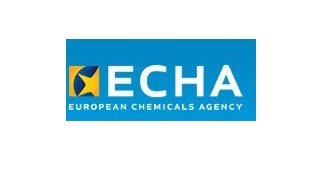
ECHA document identifies most PIN flame retardants as low hazard, no regulatory action needed, including mineral, nitrogen, inorganic phosphate and several types of organophosphorus FR. ECHA (European Chemicals Agency) proposes “a wide and generic restriction” (under REACH) for all aromatic brominated FRs (with conditions), but with further preparatory work needed before a restriction dossier is developed, and calls for more data on aliphatic brominated FRs and some organophosphorus FRs. When more data is available (expected 2024), these groups will be reassessed with possible restriction processes not before 2025. Chlorinated FRs are considered to be already restricted or regulatory measures are already initiated.
The Strategy also notes that in addition to regulatory measures under REACH, the European Commission may introduce requirements on flame retardants in products under the Ecodesign Regulation, similar to the exclusion of any halogenated flame retardant in enclosures and stands of electronic displays (see pinfa Newsletters n°s 136 and 108).
pinfa provided detailed input to and met with ECHA during their preparation of this work, including providing the Peter Fisk study on grouping of organophosphorus PIN FRs (see pinfa Newsletter n°142).
The Strategy identifies the following groups of PIN FRs as requiring no regulatory action, or as of no significant hazard based on current information:
- For inorganic phosphorus FRs, no regulatory action needed: phosphates, polyphosphates, inorganic phosphinates, inorganic phosphonates and phosphorus.
- Of organic phosphorus FRs, low or unlikely hazard: non-cyclic alkyl aryl esters of phosphoric acid, other hydrogenphosphonates and alkyl phosphonates, their salts and esters, dibenzo oxaphosphorine oxide derivatives (DOPO derivatives), hydrocarbyl phosphinates
- Of nitrogen FRs, no regulatory action needed for: triazinetrione and triazinetriamine derivatives*, guanidylureas, cyanoguanidines and biguanidines group and the non-aromatic guanidines, piperazine-functonalised polyamines and primary aliphatic diamines and their salts, aliphatic and benzylic ureas**
- Of inorganic FRs, no regulatory action needed for: molybdenum and its simple compounds, zirconium and its simple inorganic compounds, sulfur and its oxides, halides, sulfides, sulfites, thiosulfates, sulfamides and most salts of sulfuric acid, inorganic silicon compounds***. Antimony (principally used as a synergist with halogenated FRs) is already classified as Carc. 2 and assessment is underway concerning genotoxicity. Some inorganic borates are already classified as Repro. 1B and extension of this classification to all inorganic borates is under consideration.
- Other inorganic FRs are not included in §5.5 (regulatory needs), presumably because there is no suggestion of risk, in particular aluminium and magnesium minerals (ATH, MDH) which are two of the highest volume PIN flame retardants, and minerals used in PIN FR synergists/smoke suppressants (iron, copper …).
The 85 page Regulatory Strategy document is published by ECHA, the European Chemicals Agency, implementing the European “Restrictions Roadmap under the Chemicals Strategy for Sustainability” (April, 20222, SWD-2022-128, see pinfa Newsletter n°138). ECHA notes the steadily growing demand for flame retardants and that changes to fire safety standards can influence flame retardant use in different products. ECHA underline that restrictions of one chemical in the past have tended to result in “regrettable substitution”. The example is cited of decabromodiphenyl ethane (DBDPE) now being widely marketed as a substitute for decabromodiphenyl ether (DecaBDE, which is now on the POPs regulation – Persistent Organic Pollutants).
The ECHA document indicates (p. 28) that 349 flame retardants have been identified within chemicals registered under REACH, of which around 2/3 have been allocated to “groups” considered in this Regulatory Strategy, and of these around 3/4 are assessed. ECHA note (p. 31) that all aromatic brominated FRs tend to be persistent, but data is lacking on most of these substances. The hazard profile of aliphatic brominated FRs is considered more diverse (p. 36), and four are targeted as known to be problematic: brominated cycloalkanes, 2 brominated alcohols, 1 brominated phosphate. ECHA notes (p. 22) that brominated FRs tend have a smaller molecular size and higher mobility than might be expected from molecular weight, because bromine is heavy, leading to wide presence in soil, house dust, sediments, etc.
ECHA note that polymeric FRs are currently exempted from REACH, but that they may break down to smaller molecules (hydrolysis, sunlight, temperature, p. 22). It is underlined (p. 36) that a key question is whether bromine can be used when included in large molecule or polymeric FRs or “whether polymers should be free of bromine in future, as (i) the release/exposure potential to hazardous brominated substances during dismantling, recycling and disposal operations may not be sufficiently controlled (or excluded), and (ii) the presence of brominated flame retardants may encumber the move towards toxic-free material cycles, to achieve the objectives of Circular Economy”. It is indicated that based on current knowledge ECHA cannot answer this question and recommends further investigations.
The Strategy document includes a 30+ page analysis of which FRs are used in which applications, markets for different FRs, in several instances citing pinfa publications as the source of data.
* triazinetriamine = melamine; already covered by harmonised classification as Carc. 2 & STOT RE 2. Melamine is also now on the REACH Candidate List. pinfa notes that this does not however concern melamine derivates used as FRs.
** for thioureas further data is needed and regulatory measures are under consideration.
*** with appropriate precautions concerning potential silicosis in handling.
ECHA press release “ECHA identifies certain brominated flame retardants as candidates for restriction”, ECHA/NR/23/07, 15th March 2023 https://echa.europa.eu/-/echa-identifies-certain-brominated-flame-retardants-as-candidates-for-restriction
ECHA “Regulatory strategy for flame retardants”, March 2023, ISBN 978-92-9468-261-1 https://echa.europa.eu/documents/10162/2082415/flame_retardants_strategy_en.pdf